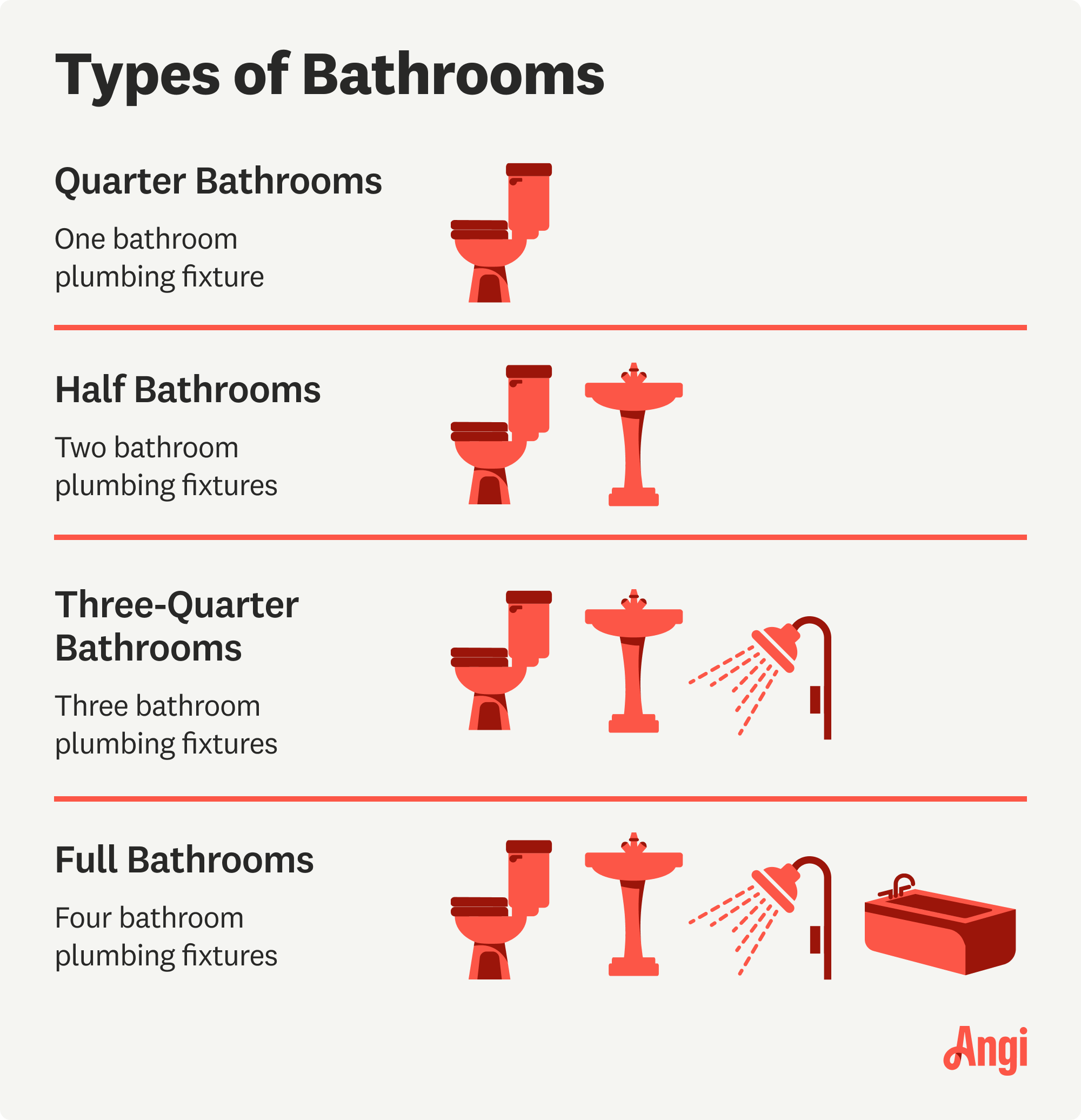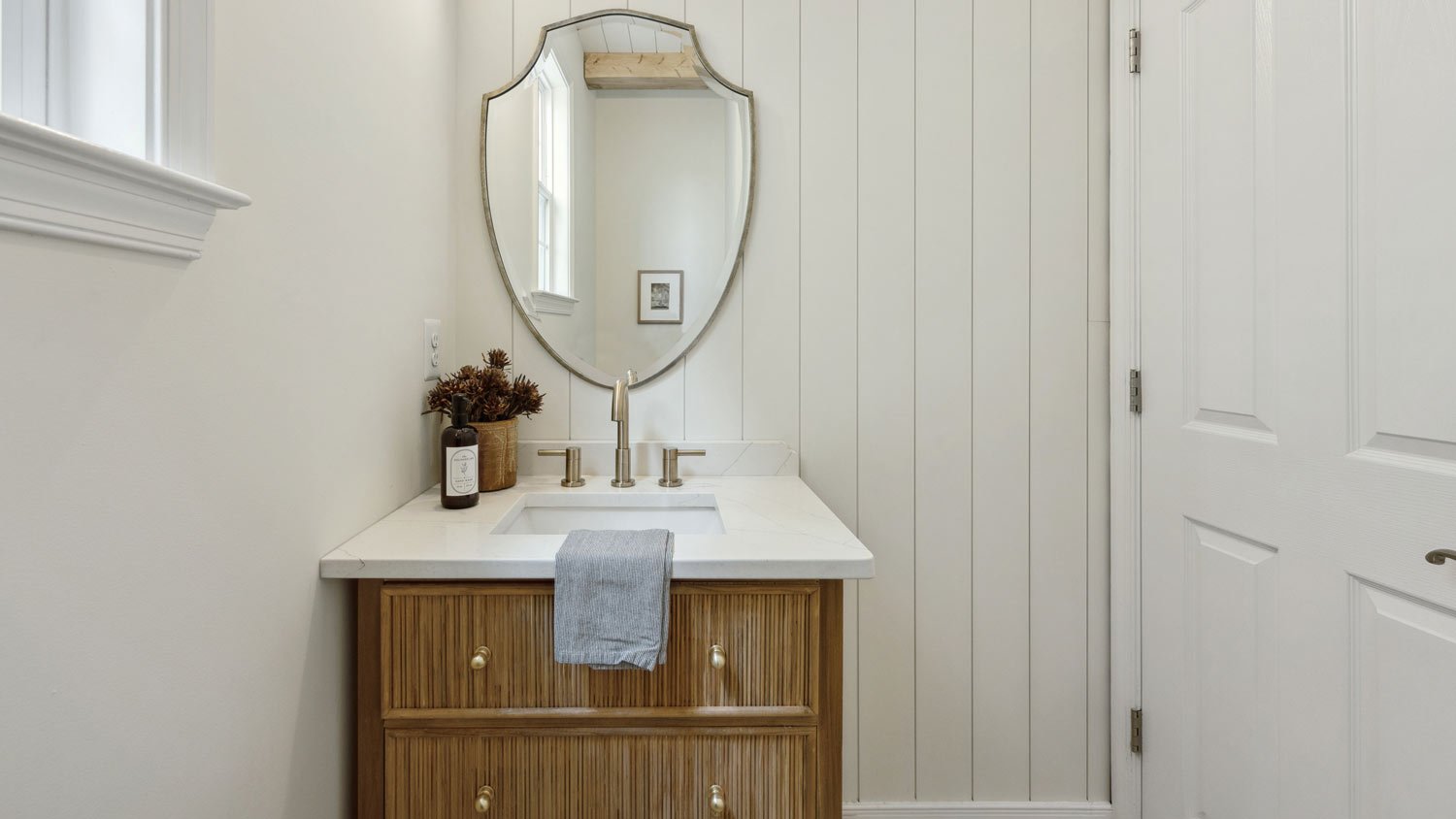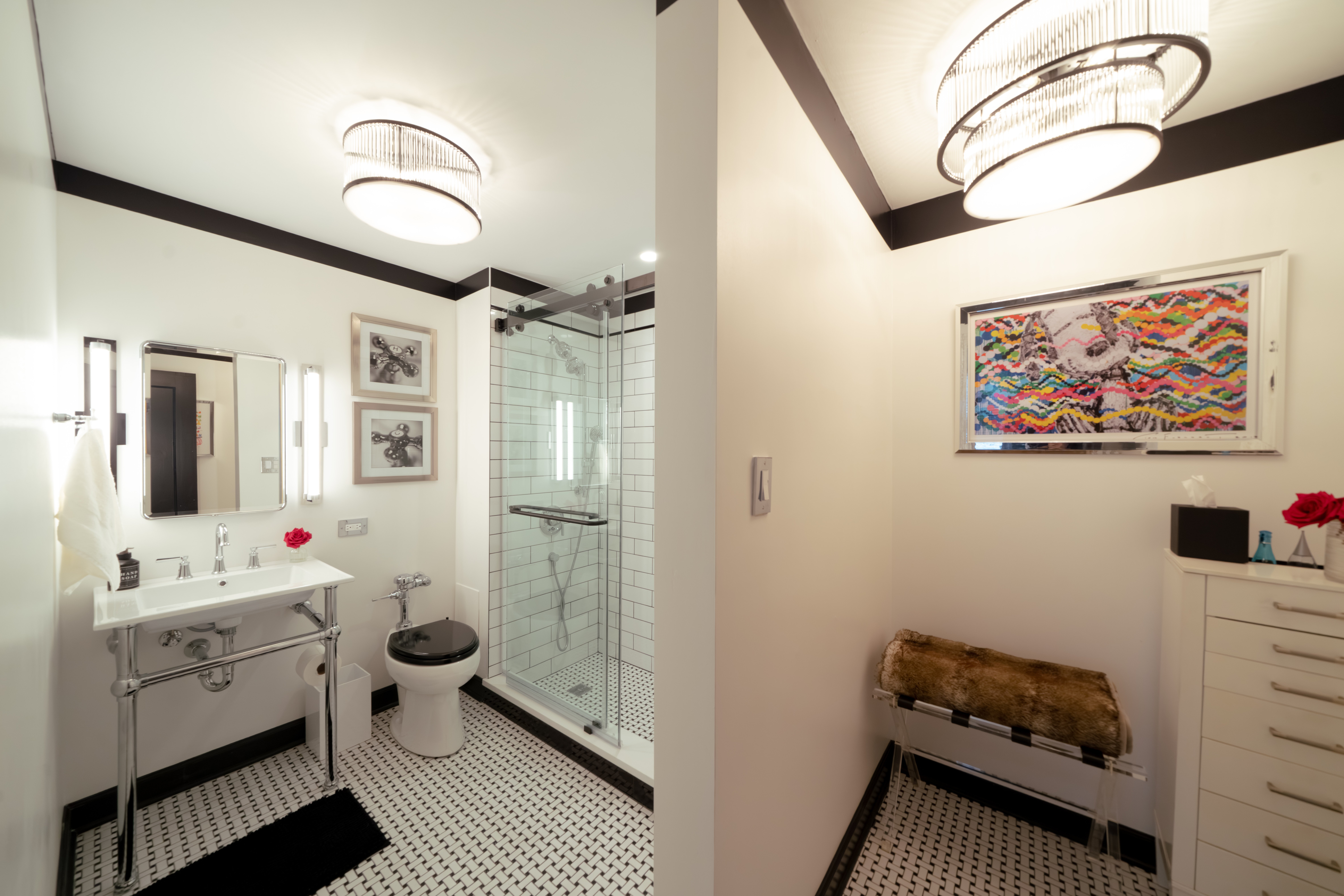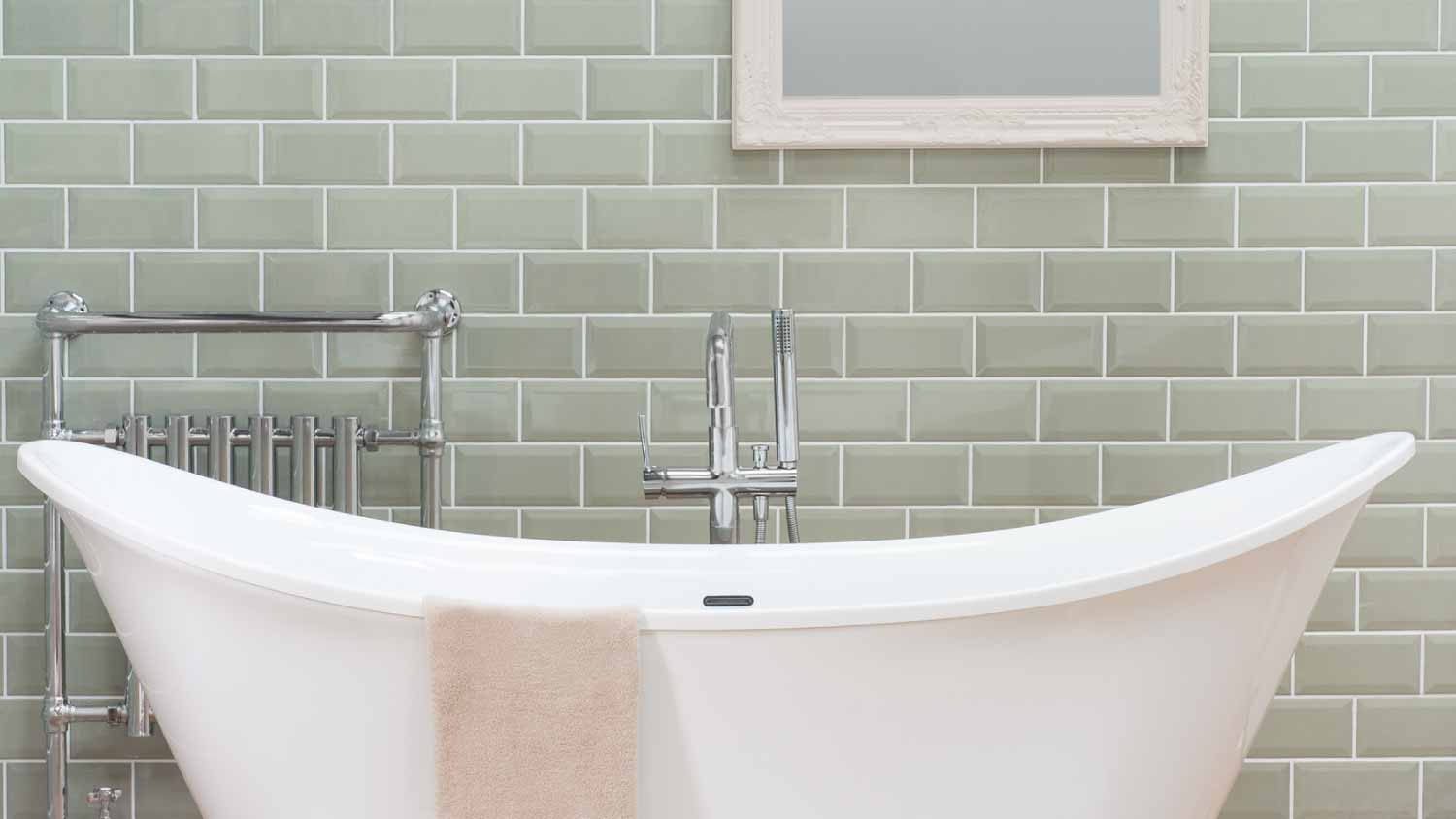
The cost to add a half bathroom varies based on geography and your choice of additions. Read on to discover just what factors into your total project cost.
Add a half bath or powder room to keep traffic out of personal areas of the home


A half bath and powder room describe a bathroom with only a sink and toilet.
Adding a half bath costs $6,500 on average, but prices vary by bathroom size, materials, and location.
Bathroom additions bring a 55% return on investment, making a half bath addition worth considering.
If it doesn’t have a bathtub, do you call it a bathroom? The short answer is yes, and if you’re confused as to the difference between a powder room and a half bath, you’re not alone. The difference between the two is in name only, but that doesn’t mean there isn’t more to know about this type of bathroom. Here’s everything you need to know about these small bathrooms.
There’s no difference between a powder room and a half bath. They are the same thing—a room with a toilet and a sink, but no bathtub or shower. This type of room is often snuck into laundry rooms, off kitchens, or as additions to homes owned by growing families. Many people like a half bath because guests can use it without entering more private areas of the house.
The term “powder room” is somewhat antiquated, and the origins aren’t entirely clear. Some believe the term powder stems from the days when wigs needed re-powdering. Others credit the term to the days when women would “powder” their noses on occasion. Today, most people are more familiar with the real estate term “half bath.” These terms categorize bathrooms based on the plumbing fixtures, which we go into below.

The number of bathrooms and the features in each are two of the first items listed when selling a house. Real estate agents use the terms quarter, half, three-quarter, and full bath to indicate the type of plumbing fixtures in the bathroom. Bathrooms, whether a quarter bath versus a half bath or a half bath versus a full bath, add value to a home. Here’s the breakdown on bathroom classification:
Quarter Bath: Toilet or shower
Half Bath: Toilet and sink
Three-Quarter Bath: Toilet, sink, and bathtub or shower
Full Bath: Toilet, sink, bathtub, and shower
A bathroom remodeler can discuss your options and explore the best types of bathrooms for your home.

Half baths or powder rooms offer versatility and convenience. While they can’t be the sole bathroom, they’re an addition to consider.
Half baths can fit in small spaces. Whether you’re looking at converting an unused space into a half bath or adding a sink to an existing quarter bath, this little addition can pack a powerful punch and reduce bathroom crowding.
As far as home improvements go, bathrooms and kitchen upgrades have the highest return on investment. However, they can also be costly. A half bath addition averages $6,500—a significant savings compared to $12,100, the cost of a full bathroom remodel.
Contact a local bathroom remodeling company to get an estimate on a bathroom add-on or remodel.
You can expect a 55% return on investment for a bathroom addition. However, for homes with only have one full bath, that added bathroom space may bring a bigger return on investment than average. Bathroom add-ons can also help attract homebuyers, especially if your home appeals to first-time homebuyers or young families looking for as many bathrooms as possible on a small budget.
If you’re considering remodeling a powder room, the average cost is between $2,250 and $3,000, but it could be as high as $15,000, based on the materials you select and labor costs. Materials include flooring, fixtures, a toilet, sink, paint or wallpaper, and design accessories. Keep in mind that powder room upgrades tend to be less expensive because there’s no shower or bath, and the square footage is less than a standard bathroom—around 30 square feet. A powder room remodel is money well spent, as it can boost your home’s resale value.
Adding a half bath can be a smart investment, especially if you have a growing family. Adding a half bath costs anywhere from $4,500 to $12,00, or about $6,500 on average. This cost can vary based on the materials you select, bathroom size, labor costs, and where your home is located. A large factor will be whether you’re taking space from a nearby room versus altering a large portion of your home’s layout or adding square footage. Bathroom additions bring a 55% return on investment, so this type of remodel is money well spent.
From average costs to expert advice, get all the answers you need to get your job done.

The cost to add a half bathroom varies based on geography and your choice of additions. Read on to discover just what factors into your total project cost.

Various factors affect the total tub-to-shower conversion cost, including the size of the area, type of shower, materials, and labor fees.

Building a guest house is one of the largest home projects and involves several different professionals. Learn about the cost to build a guest house and where you can save.

An outdated bathroom is transformed into a vintage-inspired space with basketweave floor tile, a console sink, and subway tile.

Discover how to dispose of old countertops, including removing, recycling, and donating. Our expert guide has all the info for DIYing or hiring a pro.

An updated bathtub can give a bathroom a whole new look. Find out how much it costs to replace a bathtub in Phoenix, AZ, including prices by type and labor costs.